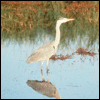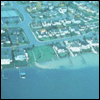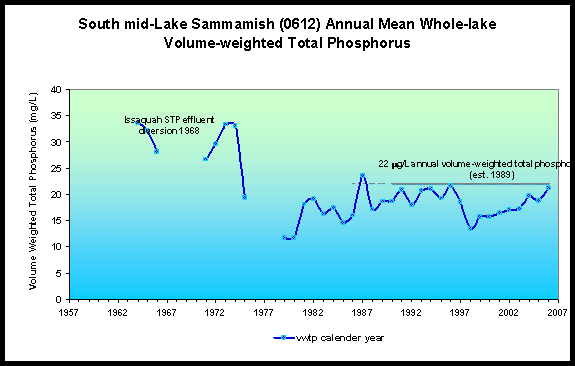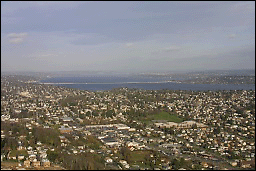The Lake Sammamish story
King County, Washington

Lake Sammamish is a beautiful and important lake in King County. More than a million people in the region use it every year: fishing, swimming, boating, water skiing, or just enjoying the scenery.

The lake provides rearing and migratory habitat for many salmon species and a home for a variety of warm water fish, birds and other wildlife. As the sixth largest lake in Washington it is designated a natural resource of statewide significance by the Shoreline Management Act.
In 1968, sewage was diverted from Lake Sammamish at the cost of $4.5 million (30 million in 2003 dollars). The diversion reduced phosphorus inputs by about 35 percent. The lake responded slowly over a five to ten year period and total phosphorus concentrations went from 30-35 µg/liter (micro-grams per liter or parts per billion) to 15-20 µg/liter. During this period water clarity increased from about 3.3 to 4.5 meters (11 to 15 feet).

These improvements were threatened by increases in non-point source phosphorus runoff entering the lake due to the impacts from increased development in the watershed. From 1978 to 1996 total phosphorus concentrations increased from about 13 µg/liter to 22 µg/liter (Figure 1) as non-point sources from urbanization have increased throughout the watershed.


Large areas of the basin have been experiencing rapid urban and suburban development as part of the overall growth in King County. New roads, housing developments, and urban areas are transforming the lake's forested watershed into urban and suburban land uses. With the change in the landscape come changes in the quality, quantity, and timing of water flows from the watershed, potentially impacting the water quality of Lake Sammamish. These impacts, associated with changing land use, present a challenge to maintaining the high quality of this lake.
There is no single source of pollution coming into the lake. Instead, the pollutant of concern phosphorus - comes from everywhere. It is generated by almost every land use activity in the watershed: forests, logging practices, farms, homes, gardens, construction sites, natural erosion processes, stormwater runoff, commercial developments, car washing, septic tanks, and more. This type of pollution is called non-point source pollution.
Land use changes in the watershed alter the quantity, quality and timing of rainfall runoff. As forests are cleared and impervious surfaces (paved surfaces) increase the water storage capacity of the soil decrease and the rate of runoff increases. These changes increase the high wet weather flows in the streams and reduce the summer low flows. The increased wet weather flows cause additional erosion and instability in the stream channels, and carry sediment into the lake. Decreased dry weather flows in the same streams reduce the amount and quality of in-stream habitat. Lake Sammamish experiences the cumulative impacts of all of the land use changes in the watershed and alteration to the influent streams.
In August 1995 the interjurisdictional Lake Sammamish Initiative was put into motion and a citizen's task force, Partners For a Clean Lake Sammamish, worked to complete the 1996 Lake Sammamish Water Quality Management Plan. The plan identified sources of phosphorus pollution and strategies to reduce them. To protect the ecological health and public benefits of the lake annual goals for the following three water quality indicators were set:
- annual volume weighted total phosphorus concentration of 22 µg/liter,
- June September mean of 2.8 µg/liter chlorophyll a (a measure of algal density),
- June September mean water transparency of 4 meters.
The 1996 Plan was designed to be adaptive and allow actions or indicators to change as our knowledge changes. Management alternatives used now are: forest conservation in the Issaquah Creek basin; practices to reduce the use and loss of phosphorus from homes, gardens, farms, forests, and businesses; water quality facilities for new urban development; better maintenance of storm water facilities in the basin; better enforcement of erosion controls; and capital projects for specific sources throughout the basin.
In August 1999, the area incorporated into the City of Sammamish (external link). King County continues to monitor the lake water quality to understand the lake's response to management actions and continued impacts from nonpoint pollution. For more information about King County's lakes and programs, visit: the lakes of King County.
For questions about Lake Sammamish, please contact Debra Bouchard, Water Quality Planner or Curtis DeGasperi, Lead Hydrologist, King County Science and Technical Support Section.

 Translate
Translate